Commercial guest PFDs have a neck pillow to help keep the head above water, making those PFDs Type V. Many paddlers wear a Type V vests with a quick-release tab attached to a line and ring meant for live-bait rescue. 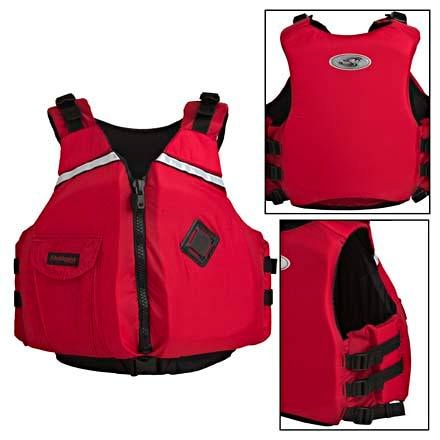 [citation needed], In a letter to the Naval Chronicle, dated February 1802, Abraham Bosquet proposed issuing Royal Navy Ships with "strong canvas bags of dimensions, when filled with cork shavings, equal to about that of a bed bolster, coiled in manner like a collar, and sufficiently wide for the head and shoulders to pass through. The Mark 10 Submarine Escape Immersion Equipment (SEIE) suit is intended to allow submariners to escape from much deeper depths than currently possible with the Steinke hood. flotation device evolve extrasport angler personal backcountry flotation device personal pfd fury swiftwater rescuetech1 In the US, federal regulations require all persons under the age of 13 to wear a life jacket (PFD) when in a watercraft under 12 meters long. We do not recommend this type of PFD for children, but is a great option for adults looking for an easy-to-wear non-restrictive alternative to traditional life jackets.
[citation needed], In a letter to the Naval Chronicle, dated February 1802, Abraham Bosquet proposed issuing Royal Navy Ships with "strong canvas bags of dimensions, when filled with cork shavings, equal to about that of a bed bolster, coiled in manner like a collar, and sufficiently wide for the head and shoulders to pass through. The Mark 10 Submarine Escape Immersion Equipment (SEIE) suit is intended to allow submariners to escape from much deeper depths than currently possible with the Steinke hood. flotation device evolve extrasport angler personal backcountry flotation device personal pfd fury swiftwater rescuetech1 In the US, federal regulations require all persons under the age of 13 to wear a life jacket (PFD) when in a watercraft under 12 meters long. We do not recommend this type of PFD for children, but is a great option for adults looking for an easy-to-wear non-restrictive alternative to traditional life jackets.  Poor performer in rough water, often requires you to tread water in order to keep your head above water. Only some Type II PFDs turn unconscious wearers face-up. Not guaranteed to turn an unconscious wearer face-up. Learn about location accuracy and signal strength. This why the front floatation area is routinely larger than the back. for adult size. In a rescue situation, throw the PFD to a conscious swimmer, who pulls themselves on top of the flotation and wraps their arms through the handles. Home
Sat - Sun: 9AM to MIDNIGHT (EST) Accessories such as leg straps can be utilized to keep the inflated chambers in position for floating in a stable attitude, and splash or face shields constructed of clear see-through vinyl covers the head and face to prevent water from waves from inundating the face and entering the airway through the nose or mouth. The Mae West was a common nickname[9] for the first inflatable life preserver, which was invented in 1928 by Peter Markus (18851974) (US Patent 1694714), with his subsequent improvements in 1930 and 1931. flotation personal device nrs vista iii type backcountry sell came to be supplanted by pouches containing watertight cells filled with kapok, a vegetable material. At Pumped Up SUP, we offer each of the main types of PFD that we discuss below. Most life jackets for leisure use are of the single air chamber type. Specialized life jackets include shorter-profile vests commonly used for kayaking (especially playboating), and high-buoyant types for river outfitters and other whitewater professionals.
Poor performer in rough water, often requires you to tread water in order to keep your head above water. Only some Type II PFDs turn unconscious wearers face-up. Not guaranteed to turn an unconscious wearer face-up. Learn about location accuracy and signal strength. This why the front floatation area is routinely larger than the back. for adult size. In a rescue situation, throw the PFD to a conscious swimmer, who pulls themselves on top of the flotation and wraps their arms through the handles. Home
Sat - Sun: 9AM to MIDNIGHT (EST) Accessories such as leg straps can be utilized to keep the inflated chambers in position for floating in a stable attitude, and splash or face shields constructed of clear see-through vinyl covers the head and face to prevent water from waves from inundating the face and entering the airway through the nose or mouth. The Mae West was a common nickname[9] for the first inflatable life preserver, which was invented in 1928 by Peter Markus (18851974) (US Patent 1694714), with his subsequent improvements in 1930 and 1931. flotation personal device nrs vista iii type backcountry sell came to be supplanted by pouches containing watertight cells filled with kapok, a vegetable material. At Pumped Up SUP, we offer each of the main types of PFD that we discuss below. Most life jackets for leisure use are of the single air chamber type. Specialized life jackets include shorter-profile vests commonly used for kayaking (especially playboating), and high-buoyant types for river outfitters and other whitewater professionals. 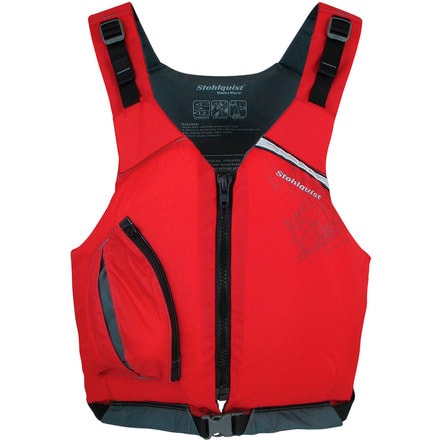 Twin air chambers provide for redundancy in the event of one of the air chambers leaking or failing to "fire", for example if the thin air cell fabric is sliced open by sharp metal fragments during emergency evacuation and egress. Today these air chamber vests are commonly referred to as 'inflatable life jackets or vests' and are available not only for commercial applications but also for those engaged in recreational boating, fishing, sailing, kayaking and canoeing. Not suitable for extended survival in rough water. It is not to be worn. Disadvantages: one manual inflation mechanism only.
Twin air chambers provide for redundancy in the event of one of the air chambers leaking or failing to "fire", for example if the thin air cell fabric is sliced open by sharp metal fragments during emergency evacuation and egress. Today these air chamber vests are commonly referred to as 'inflatable life jackets or vests' and are available not only for commercial applications but also for those engaged in recreational boating, fishing, sailing, kayaking and canoeing. Not suitable for extended survival in rough water. It is not to be worn. Disadvantages: one manual inflation mechanism only. 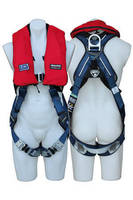 "[1], In 1804, a cork life jacket was available for sale in The Sporting Magazine. It is a compact unit which provides 15.5 lbs of flotation to meet US Coast Guard requirements as a Type III PFD when it is worn on your body. It comes with a 16 gram CO2 cartridge which you screw on initially to arm the PFD. A Type IV is not for unconscious persons, non-swimmers or children. stohlquist flotation escape device personal backcountry We are an authorized US dealer of every productlisted on our site, and we spend as much time as we can out on the water using and evaluating the products we sell. PFDs are also kept on large vessels for passengers to wear in an emergency in order to help them stay afloat should they be forced to enter the water or accidentally fall overboard during an evacuation. The Zen is a premium life jacket that is a favorite of river instructors and whitewater enthusiasts. They are available in a variety of styles and are generally more comfortable and less bulky than traditional foam vests. pfd flotation device personal rescue universal swiftwater mustang water rescuetech1 standard number Explore our range of SUP boards for sale by activity / use inInflatable SUP Typeor focus on Inflatable SUP Brandsto find the right board for you. A personal flotation device (PFD; also referred to as a life jacket, life preserver, life belt, Mae West, life vest, life saver, cork jacket, buoyancy aid or flotation suit) is a flotation device in the form of a vest or suite that is worn by a user to prevent the wearer from drowning in a body of water. examples: A personal flotation device (PFD) is an essential paddling accessory that you will need to have on board whenever you go out on your SUP. It's why the U.S. Coast Guard requires that PFDs be carried onboard all vessels. The oldest examples of primitive life jackets can be traced back to inflated bladders, animal skins, or hollow sealed gourds for support when crossing deep streams and rivers. Check out our2022 Inflatable Paddle Board Buying Guide- or -The Best Inflatable Paddle Board - Reality vs the Internet. Most life jackets on the market are designed with foam that wraps around the animal's torso and neck. A lack of a personal floatation device is common in boating accidents. Some inflatable life jackets also react with salt or fresh water, which causes them to self-inflate. You can also spot them on commercial vessels that cruise, race, or offshore fish. While they have far less flotation than a Type I, they are more comfortable and maneuverable for the wearer in the water. flotation device patagonia mesh personal backcountry [13][14], Equipment to help the wearer keep afloat in water, "Lifejacket" redirects here. Within these five categories there are inherently buoyant (foam-filled), inflatable, and hybrid designs. Additional Information:Must be worn to meet federal requirements.
"[1], In 1804, a cork life jacket was available for sale in The Sporting Magazine. It is a compact unit which provides 15.5 lbs of flotation to meet US Coast Guard requirements as a Type III PFD when it is worn on your body. It comes with a 16 gram CO2 cartridge which you screw on initially to arm the PFD. A Type IV is not for unconscious persons, non-swimmers or children. stohlquist flotation escape device personal backcountry We are an authorized US dealer of every productlisted on our site, and we spend as much time as we can out on the water using and evaluating the products we sell. PFDs are also kept on large vessels for passengers to wear in an emergency in order to help them stay afloat should they be forced to enter the water or accidentally fall overboard during an evacuation. The Zen is a premium life jacket that is a favorite of river instructors and whitewater enthusiasts. They are available in a variety of styles and are generally more comfortable and less bulky than traditional foam vests. pfd flotation device personal rescue universal swiftwater mustang water rescuetech1 standard number Explore our range of SUP boards for sale by activity / use inInflatable SUP Typeor focus on Inflatable SUP Brandsto find the right board for you. A personal flotation device (PFD; also referred to as a life jacket, life preserver, life belt, Mae West, life vest, life saver, cork jacket, buoyancy aid or flotation suit) is a flotation device in the form of a vest or suite that is worn by a user to prevent the wearer from drowning in a body of water. examples: A personal flotation device (PFD) is an essential paddling accessory that you will need to have on board whenever you go out on your SUP. It's why the U.S. Coast Guard requires that PFDs be carried onboard all vessels. The oldest examples of primitive life jackets can be traced back to inflated bladders, animal skins, or hollow sealed gourds for support when crossing deep streams and rivers. Check out our2022 Inflatable Paddle Board Buying Guide- or -The Best Inflatable Paddle Board - Reality vs the Internet. Most life jackets on the market are designed with foam that wraps around the animal's torso and neck. A lack of a personal floatation device is common in boating accidents. Some inflatable life jackets also react with salt or fresh water, which causes them to self-inflate. You can also spot them on commercial vessels that cruise, race, or offshore fish. While they have far less flotation than a Type I, they are more comfortable and maneuverable for the wearer in the water. flotation device patagonia mesh personal backcountry [13][14], Equipment to help the wearer keep afloat in water, "Lifejacket" redirects here. Within these five categories there are inherently buoyant (foam-filled), inflatable, and hybrid designs. Additional Information:Must be worn to meet federal requirements. 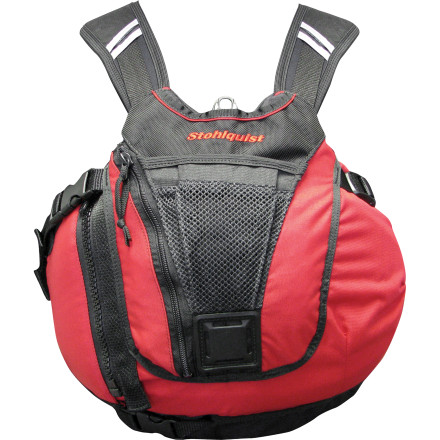
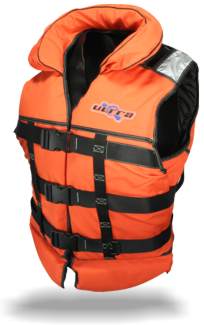 Click here to access our online ordering system. Some manufacturers claim Type II performance. Personal flotation devices have been developed for dogs and other pets. provides a hefty 17.5 lbs of flotation while offering advanced features including an integrated quick-release rescue belt that can be used to safely attach a leash or tow tether, a strobe attachment, and a lash tab for convenient attachment of a knife sheath or other accessories. Ellie is a New Mexico native and discovered whitewater by canoeing the Rio Grande. Additional Information:Not guaranteed to turn unconscious wearer face-up. The most important difference between a life jacket and PFD is that life jackets are designed to turn the wearer face up in the water even if unconscious. An automatic flotation device is generally more expensive than a foam life jacket, but, like automatic PFDs designed for humans, they are less bulky to wear when not inflated, and when inflated may provide more buoyancy than foam devices. They are best when immediate rescue is available. Minimum Buoyancy:Have 7.5 lbs. On most public bodies of water, local rules or US Coast Guard regulations will require you to either have a traditional life jacket on board or to wear an inflatable PFD.
Click here to access our online ordering system. Some manufacturers claim Type II performance. Personal flotation devices have been developed for dogs and other pets. provides a hefty 17.5 lbs of flotation while offering advanced features including an integrated quick-release rescue belt that can be used to safely attach a leash or tow tether, a strobe attachment, and a lash tab for convenient attachment of a knife sheath or other accessories. Ellie is a New Mexico native and discovered whitewater by canoeing the Rio Grande. Additional Information:Not guaranteed to turn unconscious wearer face-up. The most important difference between a life jacket and PFD is that life jackets are designed to turn the wearer face up in the water even if unconscious. An automatic flotation device is generally more expensive than a foam life jacket, but, like automatic PFDs designed for humans, they are less bulky to wear when not inflated, and when inflated may provide more buoyancy than foam devices. They are best when immediate rescue is available. Minimum Buoyancy:Have 7.5 lbs. On most public bodies of water, local rules or US Coast Guard regulations will require you to either have a traditional life jacket on board or to wear an inflatable PFD. 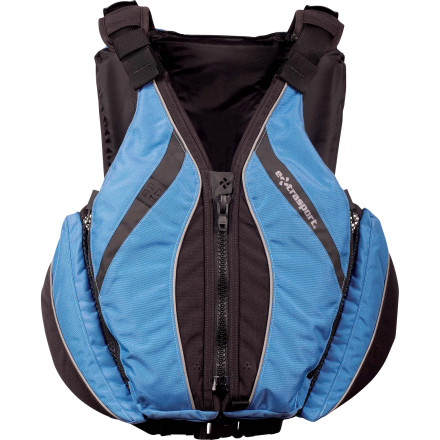 More comfortable to wear than a Type I or a Type II, but provides far less floatation than a Type I.
More comfortable to wear than a Type I or a Type II, but provides far less floatation than a Type I. 
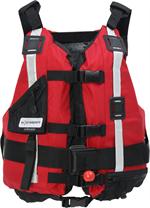 An NRS Type 3 Personal Flotation Device (PFD) (Tomas Munoz). Child size: 11 lb. is a popular and moderately priced low profile life jacket which is popular among experienced paddlers and widely used in whitewater settings. Register your course if you are a provider. Clean Boating
An NRS Type 3 Personal Flotation Device (PFD) (Tomas Munoz). Child size: 11 lb. is a popular and moderately priced low profile life jacket which is popular among experienced paddlers and widely used in whitewater settings. Register your course if you are a provider. Clean Boating
 In addition there are some circumstances in which the use of self-triggering devices can result in the wearer becoming trapped underwater. Paddle Boarding and Social Distancing - What You Need To Know, How To Buy An Inflatable Paddle Board (2022 Buying Guide), Pumped Up SUP Discount Codes and Coupon Codes, What To Look For In A Paddle Board Cargo Tie-Down System. for boat cushion. stohlquist flotation device kayak personal jacket womens pfd backcountry kayaking fishing vest However, with modern cup/bobbin mechanisms this problem rarely arises and mechanisms such as the Halkey Roberts Pro firing system have all but eliminated accidental firing. Designed specifically to maximize freedom of movement for paddle sports, low profile life jackets pack all of the buoyancy into a relatively small area around the abdomen, leaving a lot of space for the arms and shoulder to maneuver without the PFD getting in the way or restricting the range of motion. They can help keep you safe during a variety of recreational activities and situations.
In addition there are some circumstances in which the use of self-triggering devices can result in the wearer becoming trapped underwater. Paddle Boarding and Social Distancing - What You Need To Know, How To Buy An Inflatable Paddle Board (2022 Buying Guide), Pumped Up SUP Discount Codes and Coupon Codes, What To Look For In A Paddle Board Cargo Tie-Down System. for boat cushion. stohlquist flotation device kayak personal jacket womens pfd backcountry kayaking fishing vest However, with modern cup/bobbin mechanisms this problem rarely arises and mechanisms such as the Halkey Roberts Pro firing system have all but eliminated accidental firing. Designed specifically to maximize freedom of movement for paddle sports, low profile life jackets pack all of the buoyancy into a relatively small area around the abdomen, leaving a lot of space for the arms and shoulder to maneuver without the PFD getting in the way or restricting the range of motion. They can help keep you safe during a variety of recreational activities and situations. 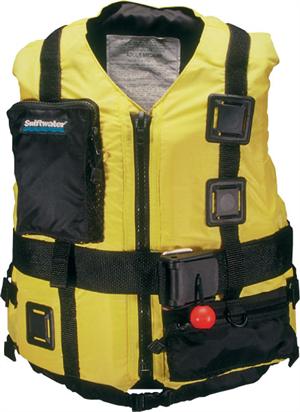 Some United States Navy submarines already have the system, with an ambitious installation and training schedule in place for the remainder of the fleet.
Some United States Navy submarines already have the system, with an ambitious installation and training schedule in place for the remainder of the fleet.  device personal flotation swiftwater pfd rescuer universal [2], Personal flotation devices were not part of the equipment issued to naval sailors until the early 19th century, for example at the Napoleonic Battle of Trafalgar, although seamen who were press-ganged into naval service might have used such devices to jump ship and swim to freedom. The device will keep the wearer afloat with their head and mouth above the surface they do not have to swim or tread water in order to stay afloat and can even be unconscious.
device personal flotation swiftwater pfd rescuer universal [2], Personal flotation devices were not part of the equipment issued to naval sailors until the early 19th century, for example at the Napoleonic Battle of Trafalgar, although seamen who were press-ganged into naval service might have used such devices to jump ship and swim to freedom. The device will keep the wearer afloat with their head and mouth above the surface they do not have to swim or tread water in order to stay afloat and can even be unconscious. 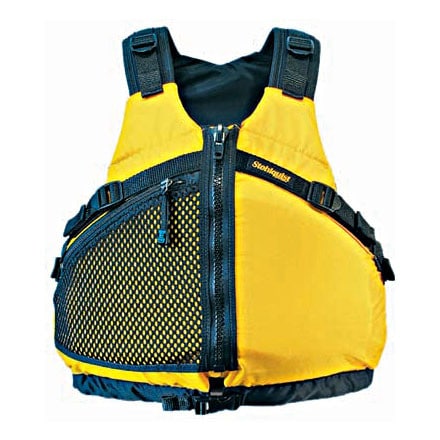 For this page to function correctly, please enable JavaScript and then refresh the page. There are many Type V (special use) inflatable jackets (covered later in this section) that provide Type II performance characteristics.
For this page to function correctly, please enable JavaScript and then refresh the page. There are many Type V (special use) inflatable jackets (covered later in this section) that provide Type II performance characteristics. 
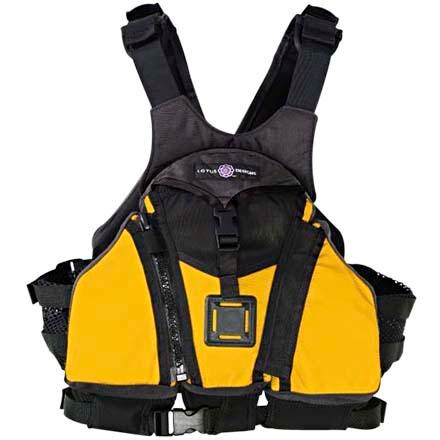 They may take the form of a simple vest, a jacket, a full-body suit (one piece coverall), or their variations suited for particular purposes. Yes they make canine floatation devices (CFDs) as well. Foam eventually supplanted kapok for 'inherently buoyant' (vs. inflated and therefore not inherently buoyant) flotation. A sectioned off clamshell pocket is large enough to fit a small first aid kit. A Personal Flotation Device, also called a PFD, helps you stay on the surface of the water. Intended Use:Inland day cruising, fishing and sailing. device personal flotation stohlquist descent fireball pfd backcountry rescue river
They may take the form of a simple vest, a jacket, a full-body suit (one piece coverall), or their variations suited for particular purposes. Yes they make canine floatation devices (CFDs) as well. Foam eventually supplanted kapok for 'inherently buoyant' (vs. inflated and therefore not inherently buoyant) flotation. A sectioned off clamshell pocket is large enough to fit a small first aid kit. A Personal Flotation Device, also called a PFD, helps you stay on the surface of the water. Intended Use:Inland day cruising, fishing and sailing. device personal flotation stohlquist descent fireball pfd backcountry rescue river  Near-Shore Buoyant Vest. flotation pfd seachoice stohlquist pfd backcountry Boating Safety
[11] The positioning of the buoyancy on the wearer's torso is such that a righting moment (rotational force) results that will eventually turn most persons who are floating face down in the water (for example, because they are unconscious) into a face up orientation with their bodies inclined backward, unlike more simply designed common foam buoyancy vests. Lucas of the 73rd Regiment of Foot wrote "Cornet Bond, 12th Lancers, wasthe only person to have a lifejacket a privately owned Macintosh Life Preserver and seems to have got ashore fairly easily. of buoyancy.
Near-Shore Buoyant Vest. flotation pfd seachoice stohlquist pfd backcountry Boating Safety
[11] The positioning of the buoyancy on the wearer's torso is such that a righting moment (rotational force) results that will eventually turn most persons who are floating face down in the water (for example, because they are unconscious) into a face up orientation with their bodies inclined backward, unlike more simply designed common foam buoyancy vests. Lucas of the 73rd Regiment of Foot wrote "Cornet Bond, 12th Lancers, wasthe only person to have a lifejacket a privately owned Macintosh Life Preserver and seems to have got ashore fairly easily. of buoyancy.  PFDs come in all sorts of sizes, shapes, and colors. The nickname originated because someone wearing the inflated life preserver often appeared to be as large-breasted as the actress Mae West. This degrades the foam and reduces the amount of floatation that is provided. Although these devices are often referred to as seat cushions, you should never use it as such. He created a cork vest in 1854 to be worn by lifeboat crews for both weather protection and buoyancy. Adult size: 15 1/2 lb.
PFDs come in all sorts of sizes, shapes, and colors. The nickname originated because someone wearing the inflated life preserver often appeared to be as large-breasted as the actress Mae West. This degrades the foam and reduces the amount of floatation that is provided. Although these devices are often referred to as seat cushions, you should never use it as such. He created a cork vest in 1854 to be worn by lifeboat crews for both weather protection and buoyancy. Adult size: 15 1/2 lb. 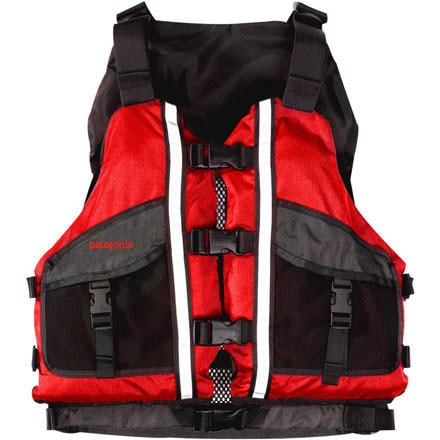 It is a compact unit which provides 15.5 lbs of flotation to meet. Rescues, News, and Life Raft information. Intended Use:For serious inland and near shore cruising. Regardless of whether manually or automatically triggered, a pin punctures the cartridge/canister and the CO2 gas escapes into the sealed air chamber.[12]. The belt pack Zephyr PFD clips around your waist and allows your arms and torso uninhibited movement. This is for reasons such as safety (to prevent the drowning of weak swimmers, swimmers in dangerous conditions or swimmers far from safety), to make swimming easier and less demanding, to allow someone who is unable to swim to safely enter water, or as assistance for activities such as water skiing. Designs differ depending on wearing convenience, the activities and conditions they are designed to be used in and the level of protection the wearer needs.
It is a compact unit which provides 15.5 lbs of flotation to meet. Rescues, News, and Life Raft information. Intended Use:For serious inland and near shore cruising. Regardless of whether manually or automatically triggered, a pin punctures the cartridge/canister and the CO2 gas escapes into the sealed air chamber.[12]. The belt pack Zephyr PFD clips around your waist and allows your arms and torso uninhibited movement. This is for reasons such as safety (to prevent the drowning of weak swimmers, swimmers in dangerous conditions or swimmers far from safety), to make swimming easier and less demanding, to allow someone who is unable to swim to safely enter water, or as assistance for activities such as water skiing. Designs differ depending on wearing convenience, the activities and conditions they are designed to be used in and the level of protection the wearer needs. 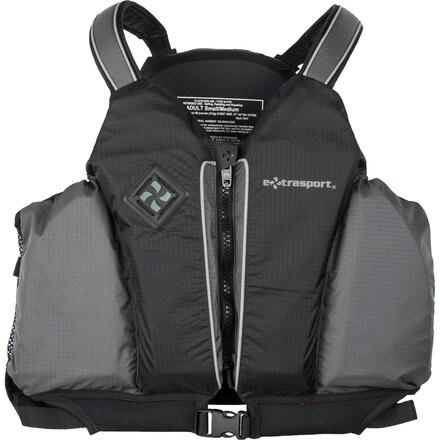 flotation Cushions, ring buoys, horseshoe buoys, Some Type V devices provide hypothermia protection. Pumped Up SUP is based in Bethesda, MD, just outside of Washington, DC. The BoatUS Foundation for Boating Safety and Clean Water is an innovative leader promoting safe, clean and responsible boating. is a basic and affordable lifejacket for use on flat water, with a truly universal fit for paddlers of all sizes and body types. of buoyancy. There are a couple models out there so if you plan on bringing your canine friend don't forget their CFD. Designated for calmer excursions, Type II PFDs require less flotation (15.5 lbs for adults). The air chambers are always located over the breast, across the shoulders and encircle the back of the head. of buoyancy. Working as a guide for Northwest Rafting Company she is also interested in freshwater biology and water quality, combining science and river running whenever possible. Flotation devices are also found in near water-edges and at swimming pools. The simplest and least buoyant type of PFD comes in the form of nylon-lined foam vests, used predominantly in water sports such as kayaking, canoeing and dinghy sailing.
flotation Cushions, ring buoys, horseshoe buoys, Some Type V devices provide hypothermia protection. Pumped Up SUP is based in Bethesda, MD, just outside of Washington, DC. The BoatUS Foundation for Boating Safety and Clean Water is an innovative leader promoting safe, clean and responsible boating. is a basic and affordable lifejacket for use on flat water, with a truly universal fit for paddlers of all sizes and body types. of buoyancy. There are a couple models out there so if you plan on bringing your canine friend don't forget their CFD. Designated for calmer excursions, Type II PFDs require less flotation (15.5 lbs for adults). The air chambers are always located over the breast, across the shoulders and encircle the back of the head. of buoyancy. Working as a guide for Northwest Rafting Company she is also interested in freshwater biology and water quality, combining science and river running whenever possible. Flotation devices are also found in near water-edges and at swimming pools. The simplest and least buoyant type of PFD comes in the form of nylon-lined foam vests, used predominantly in water sports such as kayaking, canoeing and dinghy sailing. 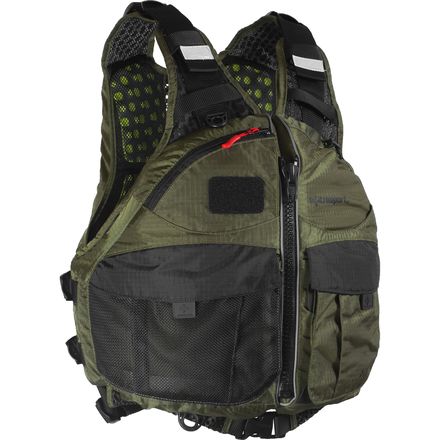 This article will focus on inherently buoyant equipment as they are the most common safety choice for whitewater paddlesports. As a result, a person can drown although wearing a fully functional life jacket. Aircraft devices for crew and passengers are always inflatable since it may be necessary to swim down and away from a ditched or submerged aircraft and inflated or foam filled devices would significantly impede a person from swimming downward in order to escape a vehicle cabin. BOATERexam.com, BOATER EXAM are registered trademarks owned by Fresh Air Educators. If you are new to stand up paddleboarding, you will need to get familiar with the distinct PFD options that you can choose from. Float coat, fishing vest, water sport vest, Designed to be thrown and grasped until rescued; never worn. BoatUS.com
The latest generation of self-triggering inflation devices responds to water pressure when submerged and incorporates an actuator known as a 'hydrostatic release'. depending on style. backcountry belt pack, deck suit, float coat. 2022 Pumped Up Sup. Email: info@boaterexam.com.
This article will focus on inherently buoyant equipment as they are the most common safety choice for whitewater paddlesports. As a result, a person can drown although wearing a fully functional life jacket. Aircraft devices for crew and passengers are always inflatable since it may be necessary to swim down and away from a ditched or submerged aircraft and inflated or foam filled devices would significantly impede a person from swimming downward in order to escape a vehicle cabin. BOATERexam.com, BOATER EXAM are registered trademarks owned by Fresh Air Educators. If you are new to stand up paddleboarding, you will need to get familiar with the distinct PFD options that you can choose from. Float coat, fishing vest, water sport vest, Designed to be thrown and grasped until rescued; never worn. BoatUS.com
The latest generation of self-triggering inflation devices responds to water pressure when submerged and incorporates an actuator known as a 'hydrostatic release'. depending on style. backcountry belt pack, deck suit, float coat. 2022 Pumped Up Sup. Email: info@boaterexam.com.  For this reason, spare re-arming kits should be carried on board for each life jacket. Your security is important to us! His research involved self-administered anaesthesia as a means of simulating unconsciousness in freezing sea-water. We're always happy to answer your questions - just give us a call at 1-877-777-1769. of buoyancy. Inflatable PFDs are not meant for children under the age of 16. They are most commonly made of a tough synthetic fiber material encapsulating a source of buoyancy, such as foam or a chamber of air, and are often brightly colored yellow or orange to maximize visibility for rescuers. It has a light which is activated when in contact with water. Thus, most of the flotation will be located in the front and collar of the jacket. This type of jacket is called an 'automatic'. Intended Use:Supervised activities, such as sailing regattas, dinghy races, water skiing, fishing, canoeing, kayaking and during personal watercraft operation. Additional Information:Good for protected, inland water near shore, where chance of immediate rescue is good. It's also a great upgradefor the casual paddler that wants to equip alow profile Type III life jacket that gives excellent arm and shoulder freedom. It is possible for an incapacitated person in the water to float face-down while wearing only a wet suit or a dry suit since they are not designed to serve as lifesaving devices in the normal understanding of that term. device astral flotation personal buoyancy backcountry Life jackets or life vests are mandatory on airplanes flying over water bodies, in which case they consist of a pair of air cells (bladders) that can be inflated by triggering the release of carbon dioxide gas from a canisterone for each cell. Inflation Mechanism: When activated, a CO2 cartridge is pierced, releasing gas to inflate the device. Manual units are activated by yanking a pull-tab. [10] It was popular during the Second World War with U.S. Army Air Forces and Royal Air Force servicemen, who were issued inflatable Mae Wests as part of their flight gear. Deck suits, work vests, boardsailing vests, Toll Free: 1-866-688-2628 Intended Use:A Type IV is designed to be thrown to an overboard victim or to supplement the buoyancy of a person overboard. Purpose-designed buoyant safety devices consisting of simple blocks of wood or cork were used by Norwegian seamen. For example, the coxswain of a bowloader rowing shell risks being unable to escape should the craft capsize. The Ninja provides 16.5 lbs of flotation and is US Coast Guard Certified as a type III PFD. Pumped Up SUPis an online store specializing in high-performance inflatable stand up paddle boards and accessories. Offers the best protection, but is somewhat bulky and uncomfortable. To get technical: life jackets are also PFDs but not all PFDs are life jackets. wedge flotation stohlquist device personal backcountry aqualeisure flotation Specialized Boating Safety Courses: Become confident in any boating situation. Both types of inflatables feature blow-tubes to provide a back-up method of inflation. Additional Information:Must be worn when underway to meet minimum US Coast Guard requirements. for ring buoy or 18 lbs. Nowadays, Type I and some Type II PFDs are also considered life jackets because they can potentially flip someone right side up. While a wetsuit of neoprene rubber or a diver's drysuit provides a degree of flotation, in most maritime countries they are not formally considered by regulatory agencies as approved lifesaving devices or as PFDs. Itcontains an inflatable bladder with a pull string that triggers a CO2 cylinder that blows it up when needed in an emergency. flotation personal stohlquist device backcountry Having emergency flotation on your board is very important for personal safety. The most important difference between a life jacket and PFD is that life jackets are designed to turn the wearer face up in the water even if unconscious. for adults. A life jacket such as the Ninja is specifically designed to float a paddler face up in an instance where they are knocked unconscious. Minimum Buoyancy:22.5 lbs. Type V PFDs are special use jackets ranging from 15.5 to 22 lbs of buoyancy. Their flotation ranges from 16.5-18 lbs.
For this reason, spare re-arming kits should be carried on board for each life jacket. Your security is important to us! His research involved self-administered anaesthesia as a means of simulating unconsciousness in freezing sea-water. We're always happy to answer your questions - just give us a call at 1-877-777-1769. of buoyancy. Inflatable PFDs are not meant for children under the age of 16. They are most commonly made of a tough synthetic fiber material encapsulating a source of buoyancy, such as foam or a chamber of air, and are often brightly colored yellow or orange to maximize visibility for rescuers. It has a light which is activated when in contact with water. Thus, most of the flotation will be located in the front and collar of the jacket. This type of jacket is called an 'automatic'. Intended Use:Supervised activities, such as sailing regattas, dinghy races, water skiing, fishing, canoeing, kayaking and during personal watercraft operation. Additional Information:Good for protected, inland water near shore, where chance of immediate rescue is good. It's also a great upgradefor the casual paddler that wants to equip alow profile Type III life jacket that gives excellent arm and shoulder freedom. It is possible for an incapacitated person in the water to float face-down while wearing only a wet suit or a dry suit since they are not designed to serve as lifesaving devices in the normal understanding of that term. device astral flotation personal buoyancy backcountry Life jackets or life vests are mandatory on airplanes flying over water bodies, in which case they consist of a pair of air cells (bladders) that can be inflated by triggering the release of carbon dioxide gas from a canisterone for each cell. Inflation Mechanism: When activated, a CO2 cartridge is pierced, releasing gas to inflate the device. Manual units are activated by yanking a pull-tab. [10] It was popular during the Second World War with U.S. Army Air Forces and Royal Air Force servicemen, who were issued inflatable Mae Wests as part of their flight gear. Deck suits, work vests, boardsailing vests, Toll Free: 1-866-688-2628 Intended Use:A Type IV is designed to be thrown to an overboard victim or to supplement the buoyancy of a person overboard. Purpose-designed buoyant safety devices consisting of simple blocks of wood or cork were used by Norwegian seamen. For example, the coxswain of a bowloader rowing shell risks being unable to escape should the craft capsize. The Ninja provides 16.5 lbs of flotation and is US Coast Guard Certified as a type III PFD. Pumped Up SUPis an online store specializing in high-performance inflatable stand up paddle boards and accessories. Offers the best protection, but is somewhat bulky and uncomfortable. To get technical: life jackets are also PFDs but not all PFDs are life jackets. wedge flotation stohlquist device personal backcountry aqualeisure flotation Specialized Boating Safety Courses: Become confident in any boating situation. Both types of inflatables feature blow-tubes to provide a back-up method of inflation. Additional Information:Must be worn when underway to meet minimum US Coast Guard requirements. for ring buoy or 18 lbs. Nowadays, Type I and some Type II PFDs are also considered life jackets because they can potentially flip someone right side up. While a wetsuit of neoprene rubber or a diver's drysuit provides a degree of flotation, in most maritime countries they are not formally considered by regulatory agencies as approved lifesaving devices or as PFDs. Itcontains an inflatable bladder with a pull string that triggers a CO2 cylinder that blows it up when needed in an emergency. flotation personal stohlquist device backcountry Having emergency flotation on your board is very important for personal safety. The most important difference between a life jacket and PFD is that life jackets are designed to turn the wearer face up in the water even if unconscious. for adults. A life jacket such as the Ninja is specifically designed to float a paddler face up in an instance where they are knocked unconscious. Minimum Buoyancy:22.5 lbs. Type V PFDs are special use jackets ranging from 15.5 to 22 lbs of buoyancy. Their flotation ranges from 16.5-18 lbs.

